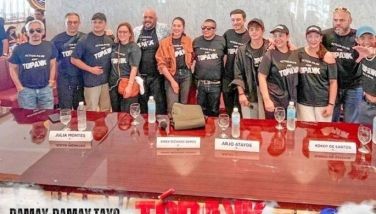Make way for 'Creative Cebu'
(INTRO) To turn the spotlight on Cebu’s creative industries and activities, Cebu was chosen as the country’s pilot area for the British Council’s Creative Cities program.
The Creative Cities program is what the British Council offices in East Asia, China and the United Kingdom have set up to promote UK’s campaign for the creative-based economy as driver of economic growth in the 21st century. It is a regional project that looks to develop a range of partnerships by cultivating essential features of a creative city such as “openness, cultural diversity, great design, and dynamic leadership at many levels, creative entrepreneurship, transformed public spaces and artistic re-imaginings of how our cities could be,” said Ana Tan, public relations manager of British Council-Philippines, in an interview.
It actually kicked off in March of this year via a trip to the UK wherein 25 leading figures in East Asia—including multi-awarded Cebuano design entrepreneur Jay Aldeguer for the Philippines—saw how identified creative cities in the UK benefited from businesses within creative industries. Neglected neighborhoods experienced economic rebirth as businesses opened fashion boutiques and art galleries as well as mounted festivals to draw in tourists and creative entrepreneurs to settle within the area. On their return to their respective countries, the representatives were tapped by the British Council to help identify creative cities for the program.
“When the Philippines was deciding on a place to call its creative city, several places came to mind. The list of potential cities included Manila, Silay (Negros Occidental), Vigan (Ilocos Sur), Liliw (Laguna) Paete (Laguna), Davao City and Cebu City,” Tan said. “After careful consideration and with much discussion, it was decided that Cebu was the perfect choice given its history of successes in the arts and its long list of creative entrepreneurs recognized the world over.”
After several exploratory trips and focus group planning, it was decided that the project shouldn’t be contained within a city, but has to extend to the entire province. Thus, “Creative Cebu” was born.
The British Council also commissioned the De La Salle School of Design and Art to run a mapping exercise to determine the island-province’s number of creative industries present and how much income is generated from them. The results of the mapping exercise will be released late this year.
The Creative Cebu program will be unveiled in grand fashion through a week-long event that the British Council is organizing this March 5-12, 2009, wherein some 60 to 70 delegates from eight countries in East Asia (Japan, Indonesia, Malaysia, New Zealand, Philippines, Taiwan, Vietnam), China and the UK are expected to attend. The event follows on from a series of trips planned within East Asia to showcase various creative cities in it. The first to host in East Asia was Bandung, Indonesia last August. A mix of artists, media, policy makers, members of the academe and creative entrepreneurs witnessed how Bandung has emerged as the most creative city for Indonesia. Bandung, for its part, reportedly gathered some 1,000 communities working in music, film, photography, architecture, fashion and handicraft industries, as well as those involved in traditional rituals and performances, to showcase more than 30 events at different venues.
Preparations are now taking form for the March event wherein Cebu will get to show why it deserves to be named as the country’s most creative place and these include a creative entrepreneur network shaping up with Aldeguer, chair of the Islands Group, on the helm. Aldeguer, a finalist in the British Council’s first International Young Design Entrepreneur awards in London three years ago, said that the network involves the entire artistic community of Cebu, including people from publishing, literature, visual arts, music, performing arts, etc. He said that with a sound and organized creative pool, it is easier to have opportunities for creative start-ups and “starving artists” to make it outside their homeground.
Tan said that it was really Aldeguer who pushed for Cebu to be selected for the ground-breaking program; after all, a lot of Cebuanos have globalized their businesses and gained international recognition thanks to their artistry and talent such as Kenneth Cobonpue, Monique Lhuillier, Butch Carungay (Avatar), Bigfoot, among others.
- Latest
- Trending























